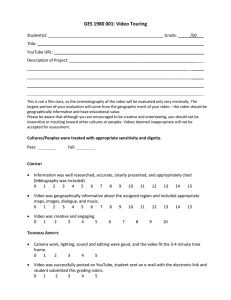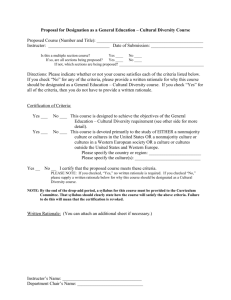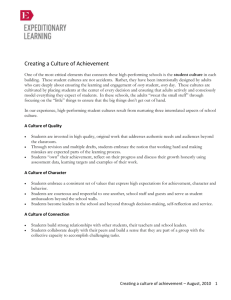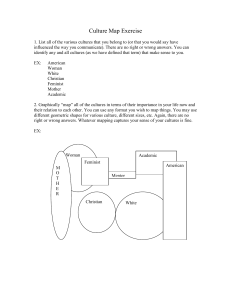Document
advertisement
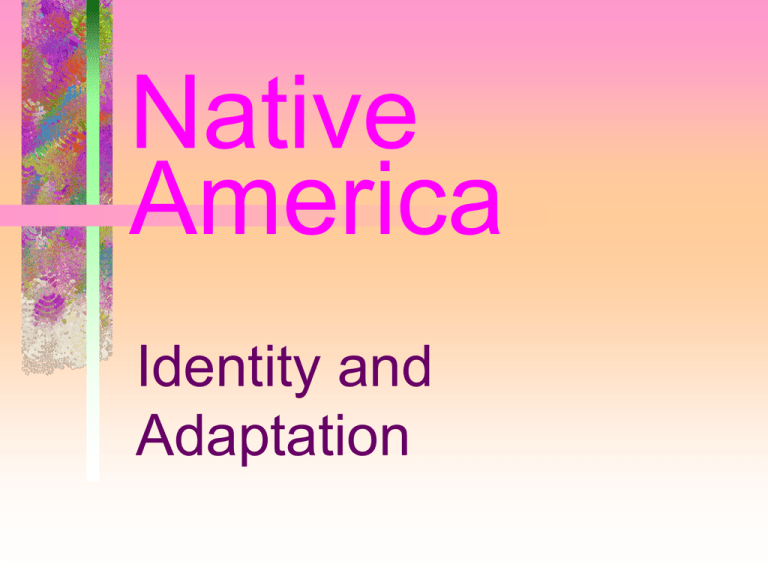
Native America Identity and Adaptation Jon Wagner • Office: GDH 309F • Phone: 7433 • E-mail: jwagner@knox.edu • Office hours: MWF Periods 3 & 5 And by appointment Why Study Other Cultures? • • • • • Diverse human possibilities Shared humanity Historical patterns “Decoding” other outlooks Communicating across differences Dealing with “otherness”… More than just good intentions Serious encounters with difference Self-understanding Coming to grips with our unacknowledged assumptions Ethnocentrism Romanticism Two stories from Star Trek • Original Series: “The Paradise Syndrome” • Star Trek Voyager: “Tattoo” Though the later one is more “politically correct,” both share the same assumptions about “native” peoples “Native” cultures presumed to be: • • • • • • • “Primitive” “Exotic” “Natural” Irrational Tradition-bound Pristine Eternal Cultural Essentialism: Treating a culture as if it had an inherently static, pristine, and eternal character or essence Self-idealization We set ourselves apart--the only ones who can be… • Progressive • Dynamic • Engaged in history • Rational • Objectively informed • Critically self-reflective • Universal • Able to define ourselves creatively But what if we’re wrong? What if… • …all peoples have complex and sophisticated thought processes? • …all people live in culturally constructed worlds, and no one is any more “natural” than anyone else? • …all peoples are, and have always been, actively involved in history? • …all cultures reflect complex and ever-changing ecological adaptations? • …all cultures are internally dynamic and capable of critical selfreflection? • …the meaning of every tradition is subject to active interpretation, and is sometimes openly contested? • …people within every society have diverse outlooks and agendas? • …cultures are not closed bubbles, but are actively involved in the exchange of ideas with others? • …every culture, including ours, struggles with the task of understanding human differences? • …all identity--whether personal, cultural, or human--is a creative quest, not a matter of passive inheritance? Objective: To explore the dynamics of Native American cultures, emphasizing historical processes of adaptation, the creative quest for personal and cultural identity, and the enterprise of understanding and representing cultural difference Two Key Concepts • Adaptation: The use of human moral, social, artistic and technological imagination to pursue valued ends within the context of fluid ecological and historical circumstances. • Identity: A process of personal or collective selfdefinition involving the negotiation of diverse agendas within open-ended and potentially contested traditions, and often relying on motivated portrayals of the “self” and the “other.” Selected examples: Diversity of: • Time • Geography • Social organization & world views • Course themes READINGS • Book of the Eskimos, by Peter Freuchen • The Sun, He Dies, by Jamake Highwater • Sun Chief, by Leo Simmons • The Death and Rebirth of the Seneca, by Anthony F. C. Wallace • Black Elk Speaks, by John Neihardt • Ceremony, by Leslie Marmon Silko Requirements and Grading • • • • • Quizzes: 35% Prehistory Web Assignment: 5% Final Paper: 20% Attendance and Participation: 10% Short writing assignments (including written Responses to Readings): 30%

